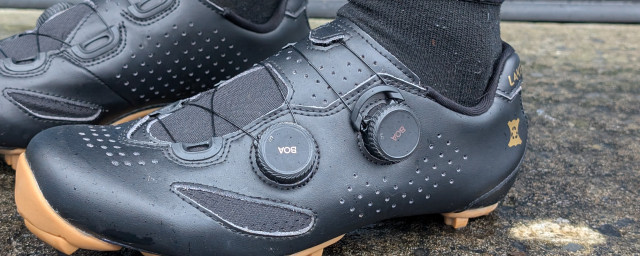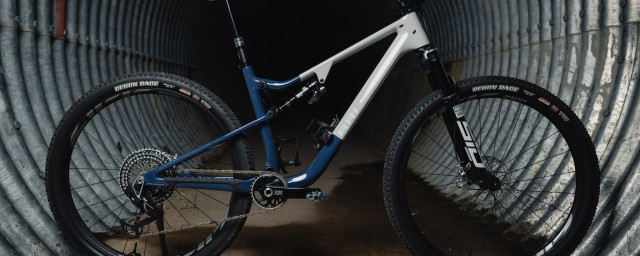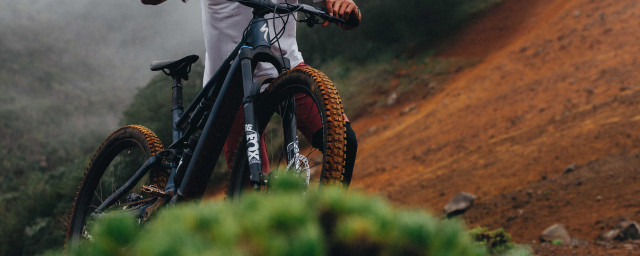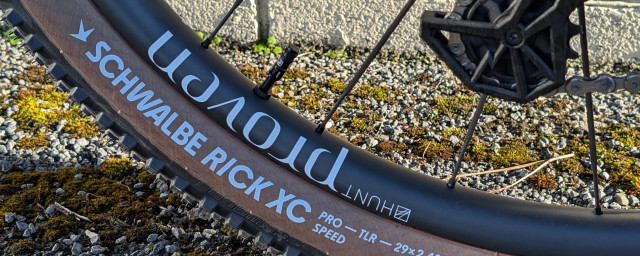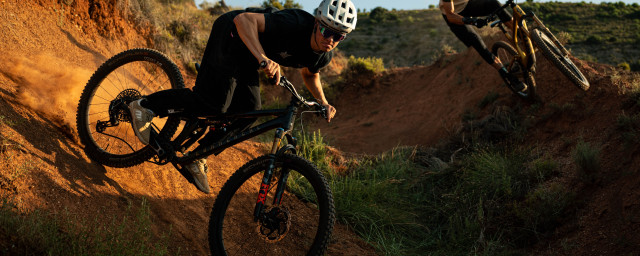Canyon Spectral CF 9 first ride review

Today Canyon has brought fresh updates to its universally praised Spectral mountain bike. It's now equipped with a host of small alterations including less suspension travel. It also gets the K.I.S system as standard fare. We headed to the Forest of Dean to see if the latest generation of the Spectral could live up to its predecessors and current rivals.
- Exclusive interview with Peter Kettenring - the designer of Canyon’s all-new carbon-fibre Torque:ON CF
- 5 ways to boost your bike's performance for free
- Canyon Torque:ON CF 9 first ride review
Although Canyon modestly claims that the changes made to the Spectral are only small, there’s a stonking amount of them that haul what was already quite a modern bike, bang up to date. Something that almost future-proofs its long-legged trail rig.
Canyon Spectral CF 9 Mullet - Technical details
Regardless, if you would like to take a deep dive into what makes this bike so different from its predecessor, head over to our news article to find out exactly why the Canyon Spectral gets less suspension.
But to quickly go over what’s new about the Spectral, there are three main things; its suspension, its frame and K.I.S.
One of the two rather large elephants in the room is that the Spectral now runs 140mm of suspension at the rear, and 150mm at the front. Canyon has done this to better bridge the gap between the Strive enduro bike, and the Spectral 125. After all, Jesse Melamed was doing quite well racing a few EWS weekends kitting his old-gen Spectral with a 180mm fork.
While Jesse won’t likely be putting the new Spectral through its paces between the tapes, versatility is still the name of the game. Rather than edge it more into the realm of enduro, the reduction in travel has been done to create a more trail friendly character. The bike’s leverage curve has also received a bit of a tweak, becoming more linearly progressive which is a term I reckon we’ll see a lot this year.
Canyon has paid special attention to the rear triangle and the frame’s compliance to stiffness ratio. In terms of stiffness, the front triangle stays the same but the rear triangle has been slimmed down to introduce said compliance while offering a bit more heel clearance. There’s also a new stiffer one-piece rocker link that reduces the transmission of lateral load to the shock. All of this, Canyon reckons will make for a more composed and predictable ride, despite its lesser travel figure.
The chainstay features a flip-chip that allows the user to pick from a mixed wheel size or a pair of 29-inch hoops. This is good for both Canyon and the consumer as the brand no longer has to stock loads of frames, and the consumer can pick and choose which rear wheel they would like to run as and when they please. Before the Spectral was fixed in its wheel size, so this is a very cool addition, especially for the habitual setup tweaker.
As I said before, there are changes aplenty but the most obvious ones are found on the front triangle. There’s now downtube integrated storage as well as three mounts underneath the top tube which can become home to two and one-bolt-mounted accessories. Our test bike is a prime example of what’s possible in the form of a neat multi-tool holder mounted on one of the bosses.
The bike’s geometry has had a touch of nip and tuck, too. Where many of the numbers are the same, its reach has grown by quite a lot, a whole 15mm. So a large size now gets a 500mm reach. The head angle stays the same at 64-degrees and its effective seat tube is a bit steeper at around 76.5-degrees, and its chainstay is nice and short, although it changes from 429 to 437mm depending on which wheel size you select. The angles can be steepened too thanks to a flip-chip located by the shock.
Oh, and the seat tube lengths have been trimmed which allows space for generously travelled dropper posts, so the large frame I tested comes with a spacious 200mm of travel.
And the second elephant in the room... That’s K.I.S, or Keep It Stable. It was introduced under an exclusivity agreement (which has since lapsed) back in 2022 on a special model of the Spectral and one of Liteville’s bikes. Now, the steering stabilisation system is specced on all new Spectral CF models as standard. It’s a clever bit of kit that encourages the front wheel to self-centre, similar to how a car’s steering wheel centres after making a turn.
Of course, this is a pretty bold move from Canyon to spec it on all Spectral CF builds but clearly, the brand believes in the system. For this model year, it uses a lighter spring than before after finding the previous one was too strong, and had too much of an effect on the steering for anyone who isn’t Fabian Barel. It is adjustable, so the user can play with how much the system influences the steering but it’s also removable.
Canyon Spectral CF 9 Mullet - Components
There are five models of the new Spectral available and I was given the CF 9 bike to test. This isn’t the range-topping bike but it comes close to £4,900.
For that money, you get RockShox suspension with a Lyrik fork and a Super Deluxe Shock handling that 140mm of squish. The SRAM theme continues as there’s a GX T-Type drivetrain and SRAM Code RSC brakes with 203 and 180mm HS2 rotors.
This model rolls on a pair of DT Swiss XM1701 wheels which are wrapped with a pair of Maxxis Minion DHR II tyres that are 2.4in width, sorted with an EXO casing at the front and EXO+ at the rear and both tyres get Maxxis Maxx Terra rubber.
The rest of the kit is handled by Canyon’s in-house G5 brand, including the travel adjustable dropper post and freshly designed G5 stem, which looks loads better than the previous variant.
With the other four models, prices start at £3,300 and go up to £6,700. It’s also worth noting that there aren’t any alloy bikes for this year at least.
Canyon Spectral CF 8 Mullet - Ride impressions
I’ve been riding the previous-generation Spectral and using it as a test bed for all kinds of products for over three years now and because I know the bike so intimately, I was both excited and sceptical to find out how Canyon’s refinements affect the Spectral’s ride. My earliest thought is that it rewrites the Spectral script to reach a similar conclusion. It’s still a remarkably capable trail bike but, like the Pivot Switchblade I rode the other week, its capability goalposts have widened. It's now leaning more towards the trail genre and, given that the Spectral is and always has been trail bike at heart, that’s no bad thing.
It’s simply more trail friendly, as expected just by looking at its suspension travel figures. Lopping off 10mm of bounce at both ends has resulted in efficiency, responsiveness and a super lively personality. However, the latter point is furthered through the specification of a 650b rear wheel.
Much like the Spectral before it, this fresh bike pedals impressively well. Very little of its suspension travel is swallowed by inefficiencies in its platform. But the rear end remains active as it moves over bumps and small undulations in the trail, resulting in good grip, and plenty of comfort. A clear result of the drop in anti-squat.
It’s clearly much longer than the old bike which comes as quite a surprise given that it’s pointed more toward the all-mountain/trail genre but the seat tube that’s been steepened by an extra half a degree so, even though its effective top tube is longer than before, the cockpit is spacious but not overly stretched out – much like the Merida One-Forty.
Where the chainstay is short and the reach long, weight is well balanced over the bike when climbing, especially with that new seat tube angle, which came as a bit of a surprise. Of all the climbing I’ve done on the bike so far, both wheels have remained firmly on the ground and, when combined with K.I.S, the new Spectral is an impressive climber.
The Spectral comes to life when pushed hard down a hill. It carries a real air of the short-traveled Spectral 125 and even a boost in composure.
That’s all to do with its new lengthy geometry, the flex that’s been built into its rear end, and K.I.S all of which add a healthy helping of stability to the bike. In a straight line, the Spectral is sure-footed and when tipped into something a little spicier, the front of the bike is supportive and confident because the front wheel is placed pretty far out in front. As a result of Canyon’s work to build compliance into the rear stays, the rear wheel is allowed to track the ground more effectively as it makes up for its lesser suspension travel by calming and damping the rear of the bike.
Then K.I.S comes in to boost confidence even further. I approached the system with an open mind but was aware that more tech on a modern mountain bike won’t please everyone. However, it works surprisingly well to keep the front of the bike in check in a range of situations. There were instances where K.I.S scooped up the front end after being knocked off line, saving me from hitting the deck. It’s a cool system that I appreciate and I’m yet to crank it to full tension.
But K.I.S and the Spectral’s newfound stability isn’t without its downsides. Starting with K.I.S – it adds a level of lethargy to the bike’s steering that requires balancing through adjustment of the system. Granted, I need to play with the adjustment more but where I’ve been happy with how it performs in a straight line, I’ve had to set up for a corner earlier and the bike’s eagerness to lean in is damped. I do like how this feels generally but when it comes to tight and twisty sections, it blunts what could be sharper handling. Again, this is purely about the setup of K.I.S and, thankfully, it can be done easily with a 4mm Allen before pedalling into a descent.
Canyon Spectral CF 9 Mullet - Early verdict
It’s not all about K.I.S though, as the bike’s extra length takes more muscle and consideration to push through especially tight corners. The short chainstay does make up for this for the most part but I’ve caught myself short mid-corner having forgotten about the extra length. This is an extenuating circumstance, however, and throughout 99 per cent of the riding I’ve done so far on the Spectral, it’s been a hell of a lot of fun.
Where the shorter travel makes a noticeable difference is during mid-cornering and the exit. Although the leverage ratio is more linear, there’s still good support in the suspension’s mid-stroke that gives the bike a real level of pop and responsiveness. Like the Spectral 125, I’ve been able to push into a corner and accelerate out with impressive amounts of free speed. It’s a fast bike, and its capability exceeds what its lesser travel figure would lead you to believe.
Even though the latest Spectral achieves its goal through slightly different means, it proudly carries the magic of what makes a Spectral a Spectral. It’s downright capable and more responsive than ever. It might not straddle the line between all-mountain and enduro as it once did but it’s a bike that gives back more on easier-going trails while providing plenty of headroom for spicier tracks. I’ve got this bike for a bit longer, so stay tuned for a full review coming soon.














